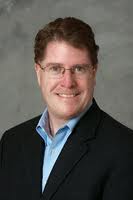Restringing Violin Memory in the Channel
Even though the Flash memory market is still relatively nascent, the competition in this space is already especially fierce. As one of the early pioneers in the development of solid-state disks (SSD) that make use of Flash memory to dramatically increase I/O performance, Violin Memory has the scars to prove it.
June 13, 2014

 Even though the Flash memory market is still relatively nascent, the competition in this space is already especially fierce. As one of the early pioneers in the development of solid-state disks (SSD) that make use of Flash memory to dramatically increase I/O performance, Violin Memory has the scars to prove it.
Even though the Flash memory market is still relatively nascent, the competition in this space is already especially fierce. As one of the early pioneers in the development of solid-state disks (SSD) that make use of Flash memory to dramatically increase I/O performance, Violin Memory has the scars to prove it.
In the first quarter fiscal 2015 Violin Memory recorded revenue of $18.1 million, a 27 percent decline year over year compared to $24.8 million recorded in the first quarter of fiscal 2014, and 35 percent lower compared to $28.0 million reported in the fourth quarter of fiscal 2014.
Not surprisingly, given the growing demand for Flash storage, investors in the company felt now might be a good time for change. This week the company announced that Dr. Richard N. Nottenburg was named as chairman of the Board and that George Antoun has joined the board. They replace former Violin Memory chairman Howard Bain III and former board member Jeff Newman.
Some of the decline in Violin Memory revenues has to do with product transitions. Violin Memory just agreed to sell its PCIe product line to sk Hynix for $23 million in cash that the company will reinvest in a new line of storage arrays and a channel program to go with it.
In fact, this week Violin Memory also announced the launch of a new global channel program that will be led by newly appointed vice president of Global Channel Sales Andrew Perry. At the same time, the company tapped Christian Putz as vice president of EMEA Channel Sales. Those hires come on the heels of the appointment earlier this year of longtime channel veteran Tom Mitchell, formerly of Avaya and Cisco, as the senior vice president of Global Field Operations.
Eric Herzog, chief marketing officer and vice president of Business Development, said collectively all these moves are part of transforming the Violin Memory sales strategy to one that is led a lot more by the channel rather than direct sales. As part of that effort, Herzog said the new channel program includes everything from deal registration and protection of channel discounts to market development funds and low-cost demonstration units.
Violin Memory is hardly the first vendor to pursue a direct sales model only to learn some hard financial lessons when the business fails to scale. The challenge Violin Memory faces is that given all the vendors now selling Flash arrays, there may not be that many channel partners that haven’t already made a commitment to another vendor. Even so, Herzog noted that most of the primary storage vendors are overdistributed. In contrast, Herzog said Violin Memory is looking for about 60 tech-savvy channel partners looking for something different to sell than every other channel partner who sells storage.
It’s hard to say how the new Violin Memory tune will play in the channel just yet. But given the quality of the channel experience the company has recruited to manage its channel program, one could safely say that Violin Memory is pretty serious about becoming a much more channel-friendly organization. Better late than never.
About the Author
You May Also Like


